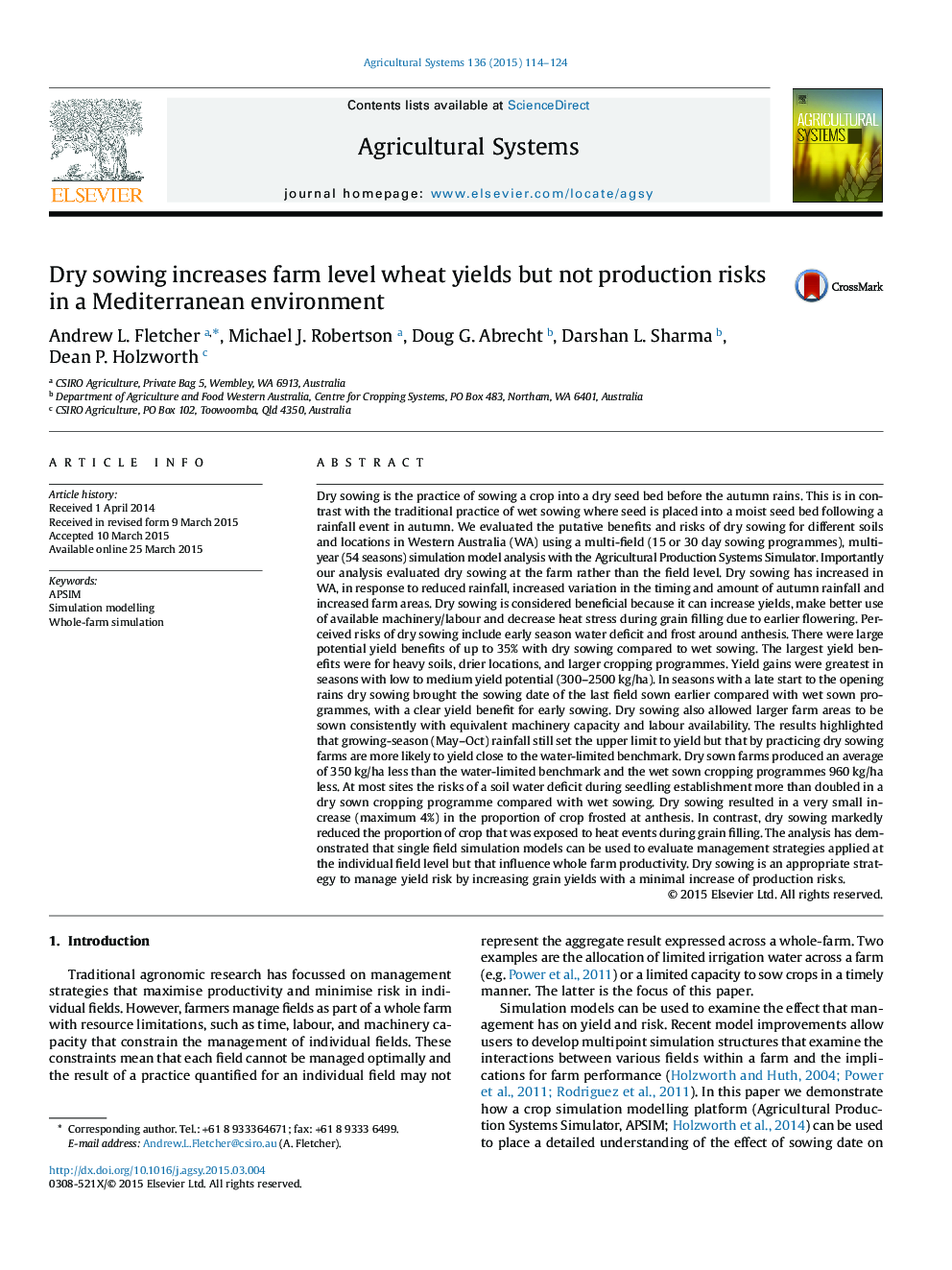| کد مقاله | کد نشریه | سال انتشار | مقاله انگلیسی | نسخه تمام متن |
|---|---|---|---|---|
| 4491200 | 1623234 | 2015 | 11 صفحه PDF | دانلود رایگان |
• Dry sowing increased farm productivity.
• Average yield increases across farms ranged from +490 kg/ha to −180 kg/ha.
• Negligible increase in risk of frost during flowering.
• Significant increase in soil water deficit during establishment.
• Reduction in risk of heat stress during grain filling.
Dry sowing is the practice of sowing a crop into a dry seed bed before the autumn rains. This is in contrast with the traditional practice of wet sowing where seed is placed into a moist seed bed following a rainfall event in autumn. We evaluated the putative benefits and risks of dry sowing for different soils and locations in Western Australia (WA) using a multi-field (15 or 30 day sowing programmes), multi-year (54 seasons) simulation model analysis with the Agricultural Production Systems Simulator. Importantly our analysis evaluated dry sowing at the farm rather than the field level. Dry sowing has increased in WA, in response to reduced rainfall, increased variation in the timing and amount of autumn rainfall and increased farm areas. Dry sowing is considered beneficial because it can increase yields, make better use of available machinery/labour and decrease heat stress during grain filling due to earlier flowering. Perceived risks of dry sowing include early season water deficit and frost around anthesis. There were large potential yield benefits of up to 35% with dry sowing compared to wet sowing. The largest yield benefits were for heavy soils, drier locations, and larger cropping programmes. Yield gains were greatest in seasons with low to medium yield potential (300–2500 kg/ha). In seasons with a late start to the opening rains dry sowing brought the sowing date of the last field sown earlier compared with wet sown programmes, with a clear yield benefit for early sowing. Dry sowing also allowed larger farm areas to be sown consistently with equivalent machinery capacity and labour availability. The results highlighted that growing-season (May–Oct) rainfall still set the upper limit to yield but that by practicing dry sowing farms are more likely to yield close to the water-limited benchmark. Dry sown farms produced an average of 350 kg/ha less than the water-limited benchmark and the wet sown cropping programmes 960 kg/ha less. At most sites the risks of a soil water deficit during seedling establishment more than doubled in a dry sown cropping programme compared with wet sowing. Dry sowing resulted in a very small increase (maximum 4%) in the proportion of crop frosted at anthesis. In contrast, dry sowing markedly reduced the proportion of crop that was exposed to heat events during grain filling. The analysis has demonstrated that single field simulation models can be used to evaluate management strategies applied at the individual field level but that influence whole farm productivity. Dry sowing is an appropriate strategy to manage yield risk by increasing grain yields with a minimal increase of production risks.
Journal: Agricultural Systems - Volume 136, June 2015, Pages 114–124
